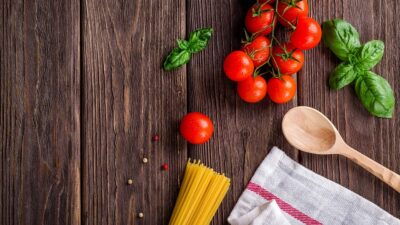In a world where convenience often trumps culinary creativity, mastering the art of crafting the perfect shopping list can transform your grocery shopping experience from a mere chore into a delightful journey. A well-organized shopping list not only saves time and money but also elevates your meals from ordinary to extraordinary. Here’s a comprehensive guide to help you create an effective shopping list that enhances your culinary endeavors.
Understanding the Importance of a Shopping List
A shopping list serves as a roadmap for your grocery journey. It minimizes impulse buys, reduces food waste, and ensures you have all the ingredients needed for your planned meals. Moreover, it can simplify meal preparation, making cooking less overwhelming and more enjoyable.
The Foundation: Planning Your Meals
1. Assess Your Current Inventory
Before you start compiling your shopping list, take stock of what you already have in your pantry and refrigerator. A quick inventory will help you avoid purchasing items you don’t need and reduce food waste.
2. Plan Your Meals for the Week
Decide what meals you want to prepare for the week. Consider your schedule and how much time you’ll have to cook. Flexibility is key; choose recipes that can easily adapt to the ingredients you have on hand.
3. Incorporate Variety
To keep your meals exciting, aim for variety. Incorporate different proteins, grains, and vegetables. Rotate through various cuisines to explore new flavors and cooking techniques—think Italian, Mexican, Asian, or Mediterranean.
Crafting Your Shopping List
4. Categorize Your Ingredients
Organize your shopping list by categories to streamline your shopping experience. Common categories include:
- Produce: Fruits and vegetables
- Proteins: Meat, poultry, fish, beans, and tofu
- Dairy: Milk, cheese, yogurt
- Grains: Rice, pasta, bread
- Pantry Staples: Oils, spices, canned goods
- Snacks: Nuts, chips, sweets
5. Be Specific
When writing down items, be specific about quantities and varieties. Instead of writing “vegetables,” specify “2 bell peppers, 1 bag of spinach.” This will help you avoid confusion when you’re at the store and make it easier to find exactly what you need.
6. Stay Flexible
While having a plan is essential, allowing room for spontaneity can be beneficial. If you come across a fresh seasonal ingredient that inspires you, don’t hesitate to adjust your list accordingly.
Shopping Smart: Tips for Success
7. Stick to the List
While it can be tempting to veer off course, try to stick to your shopping list. This discipline will keep your budget in check and ensure you remain focused on your meal planning goals.
8. Shop the Perimeter
Most grocery stores arrange their products so that fresh produce, dairy, and meats are situated around the perimeter. By beginning your shopping in these sections, you’re more likely to fill your cart with nutritious options and avoid processed foods found in the aisles.
9. Be Mindful of Sales and Discounts
While maintaining focus on your list is important, keep an eye out for discounts or sales on items you use regularly. Bulk buying these can save money, but ensure that you will use the products before they spoil.
Moving from Cart to Kitchen
10. Organize Upon Return
Once you’re back home, take a moment to organize your groceries. Store items where they are easy to see and access. This makes meal preparation smoother and keeps you motivated to cook.
11. Prep Ahead
Consider doing some meal prep immediately after shopping. Wash and chop vegetables, marinate proteins, or pre-cook grains. This preparation will make weeknight cooking much more manageable and less time-consuming.
12. Evaluate and Adjust
At the end of the week, reflect on your meal planning and shopping list process. Were there items that you didn’t use? Were there any recipes that the family loved? Use this evaluation as a learning opportunity to refine your list for the next week.
Conclusion
Creating the perfect shopping list is an invaluable skill that goes beyond just grocery shopping. It opens the door to creativity in the kitchen and encourages healthier eating habits. By taking the time to plan your meals, categorize your shopping list, and shop mindfully, you can elevate your culinary experiences and ensure delicious, home-cooked meals all week long. So grab your notepad, start planning, and embark on your journey from cart to kitchen!



